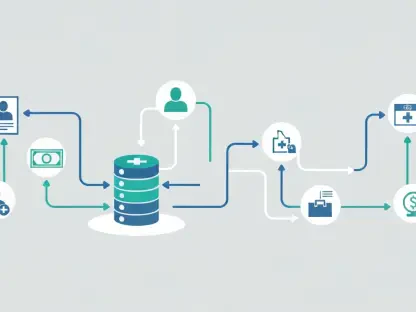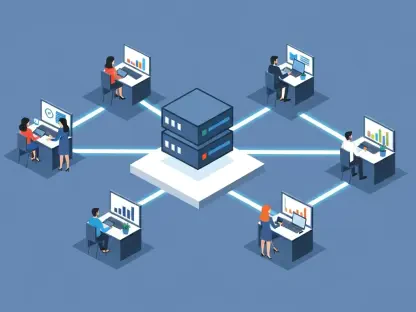In today’s fast-paced business environment, managing procurement processes efficiently can make a significant difference in operational success. Manual procurement methods often result in errors, delays, and higher costs. The advent of Procure-to-Pay (P2P) software addresses these challenges by automating the entire procurement cycle, from vendor selection to payment processing. These advanced solutions not only improve accuracy but also enhance overall business productivity.
The Importance of P2P Software in Modern Business
Modern businesses face increasing pressure to optimize their procurement processes. Manual procurement systems are prone to errors and inefficiencies, leading to increased operational costs and compliance risks. As the volume and complexity of procurement activities grow, the need for effective P2P software has become more critical than ever. These solutions provide a structured and automated approach to handling procurement tasks, significantly reducing human error and ensuring that businesses adhere to compliance standards.
P2P software solutions help businesses overcome these challenges by streamlining and automating the procurement lifecycle. These tools enable efficient management of business purchases, reducing manual intervention and mitigating risks. By automating repetitive tasks and providing real-time insights into procurement activities, P2P software allows businesses to make informed decisions quickly. This leads to improved supplier relationships, better negotiation outcomes, and ultimately, significant cost savings.
Criteria for Selecting P2P Software
Choosing the right P2P software involves evaluating several key factors. The author explored various P2P software solutions, using G2 Grid Reports to identify top contenders. Key evaluation criteria included automation capabilities, vendor management efficiency, and integration with existing financial systems. Each software’s ability to automate end-to-end procurement processes helps ensure a seamless flow of activities from vendor selection to payment.
Insights from procurement and finance professionals, along with user reviews on G2, provided valuable information on untested tools. This evaluation process ensures a comprehensive understanding of each software’s strengths and weaknesses. The criteria for selection also focused on ease of use, scalability, and overall user satisfaction. Integration capabilities with ERP and financial systems were particularly important, as this feature ensures that all procurement data is consistent and readily accessible across the organization.
Key Features of Effective P2P Software
End-to-end procurement automation is a crucial feature, ensuring seamless management of the procurement process from start to finish. This includes everything from issuing purchase orders to processing invoices and making payments. Supplier management capabilities are essential for maintaining productive relationships and ensuring adherence to procurement policies. Effective catalog and contract management further streamline procurement operations, allowing businesses to maintain a centralized repository of all purchasing agreements and vendor contracts.
Spend analytics and cost control are other vital components of P2P software. These features provide businesses with detailed insights into their spending patterns, helping them identify areas where costs can be reduced. Compliance and risk management capabilities help ensure that all procurement activities conform to internal policies and external regulations. By providing a comprehensive view of the entire procurement lifecycle, P2P software enables businesses to proactively manage risks and ensure compliance at every step.
Analysis of Top P2P Software for 2025
mjPRO
mjPRO offers AI-driven procurement automation and contract management. This software excels in e-tendering and bid submission capabilities, simplifying the digital submission process. The automated workflows reduce manual effort and streamline procurement processes. These features significantly enhance efficiency and reduce the chances of errors and delays. However, users have reported occasional system glitches and a complex bid submission process. Freezing portals and malfunctioning Excel formats can pose challenges, highlighting the need for continuous improvement.
SAP Ariba
SAP Ariba is known for its seamless integration with SAP ERP and S/4HANA, ensuring real-time synchronization. This integration capability allows businesses to maintain consistency in their procurement data across all platforms. SAP Ariba’s robust customer support is a significant advantage, providing clear guidance to users. However, the software’s steep learning curve, complex navigation, and outdated UI/UX are notable drawbacks. The high implementation costs of SAP Ariba can be prohibitive for smaller companies, limiting accessibility. Despite these challenges, the software remains a powerful tool for larger enterprises looking for a comprehensive P2P solution.
Coupa
Coupa excels in automating purchase workflows and offers powerful analytics with extensive reporting options. The software’s user-friendly interface, however, requires improvement. Users also highlight limited support for catalogs and cXML invoicing. Although Coupa provides robust analytics and automation capabilities, concerns regarding usability, specifically in sourcing functionalities and supplier information management, are areas for potential improvement. Enhancing these aspects would make the software more effective and user-friendly.
Airbase
Airbase offers effortless receipt capture and AI-powered expense management. The software’s transparent approval process and efficient invoice reconciliation are significant strengths. These features streamline expense reporting and ensure that all transactions are accurately recorded. However, the PO request process needs enhancement, particularly for denied requests. The lack of bulk editing options for expense details and occasional mobile app performance issues need addressing for optimal user experience. By focusing on these areas, Airbase can further improve its functionality and user satisfaction.
Pluto
Pluto provides a seamless approval workflow that reduces the need for back-and-forth emails. Automatic extraction of key details in receipt capture and an intuitive interface make onboarding easy. These features simplify procurement tasks and improve overall efficiency. Despite these strengths, initial setup with compliance can be time-consuming. Deactivated cards due to delayed receipt uploads and the need for better mobile app performance are noteworthy challenges. Addressing these issues would enhance the software’s overall effectiveness.
Procurify
Procurify emphasizes customer support and success, offering flexibility in setting up controls like spending limits and approval workflows. The software’s smooth integration with other systems and a mobile app for on-the-go management are significant advantages. These features ensure that businesses can manage their procurement processes effectively, regardless of location. However, built-in reports lack depth, and the receiving module and order request process could be more streamlined. The inability to add or modify items to an existing order is another limitation that needs to be addressed to enhance usability.
Overarching Trends in P2P Software
P2P software plays a critical role in automating procurement processes and enabling efficient management of business purchases. The primary focus on supplier management is vital for maintaining productive relationships and ensuring compliance with procurement policies. This focus helps businesses build strong, long-lasting relationships with their suppliers, leading to better negotiation outcomes and enhanced vendor performance.
Integration with ERP and financial systems remains a crucial requirement for real-time data consistency and operational efficiency. By ensuring that all procurement data is synchronized across the organization, businesses can make informed decisions quickly and accurately. AI-powered analytics and automation significantly enhance the effectiveness of P2P processes, enabling businesses to identify cost-saving opportunities and optimize their procurement strategies.
Essential Insights for Businesses
In today’s fast-paced, ever-changing business world, effective management of procurement processes is vital for operational success. Relying on manual procurement methods can lead to various issues such as errors, delays, and increased costs, which can significantly impact a company’s efficiency and bottom line. To overcome these challenges, many businesses have started to adopt Procure-to-Pay (P2P) software, which automates the entire procurement cycle—from selecting vendors to processing payments. These advanced solutions are designed to streamline procurement activities, reducing human errors and speeding up the procurement process. By automating tasks that were once handled manually, P2P software enhances accuracy and ensures timely payments, which in turn fosters better vendor relationships. Furthermore, the benefits extend beyond just transactional accuracy; P2P systems contribute to overall business productivity by freeing up valuable time and resources. Companies can then focus on strategic activities rather than administrative tasks. Consequently, the implementation of P2P software leads to more efficient operations, which are crucial in maintaining a competitive edge in today’s business landscape. Embracing these innovative solutions proves to be a game-changer, significantly optimizing procurement processes and positively impacting a company’s growth and success.









